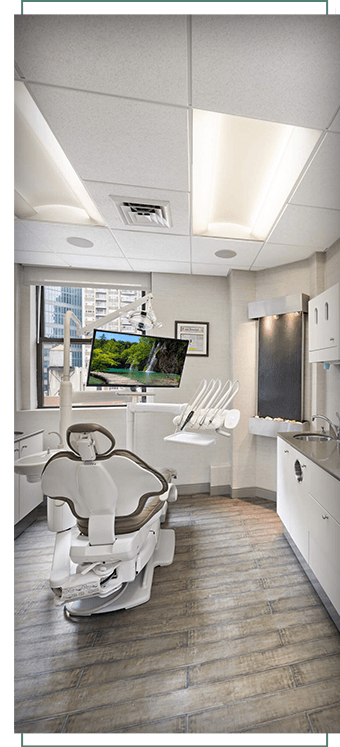DENTAL SERVICES IN NEW YORK CITY
ABOVE & BEYOND PATIENT EXPECTATIONS
The industry-leading team at Marc Lazare D.D.S., M.A.G.D. makes excellent oral health a main priority to our patients. Dr. Lazare and his highly trained staff cater to meet the needs of all patients. Teeth functionality and appearance are a focus for our as well as foundational oral hygiene.
We recommend seeing our dentist not just for smile concerns but for routine cleanings, exams, and oral evaluations as well. Your mouth and your body are connected and are always working together, so taking the extra time to care for your teeth will ultimately benefit both your oral and overall health.
Schedule an appointment for one of our Upper East Side cosmetic dentistry services today. Contact us at (332) 334-8290.

I had a tooth that I thought was beyond repair after a root canal and after doing a lot of research on the best biomemetic dentists in the country, I found Dr. Marc Lazare. He built up the tooth without having to extract it or install an implant.
- Kevin F.
DENTAL SERVICES
THE MANY WAYS WE CAN HELP YOU
- Biomimetic Dentistry
- Smile Makeover
- Porcelain Veneers
- Infrared Light TMJ Therapy
- Teeth Whitening
- Invisalign
- Orthodontics
- Inlays & Onlays
- Dental Crowns
- Dental Bridges
- Dental Implants
- Tooth Bonding
- Cold Sore Laser Treatment
- Laser Gum Reshaping
- Dental Emergency
- Preventive Dentistry
- Teeth Cleaning & Checkup
- Gum Disease
- Dental Sealants
- Oral Cancer Screening
- Simple Tooth Extraction
- Dentures (Partial & Full)
- TMJ Issues & Nightguards
COSMETIC DENTISTRY SERVICES
Improve the Appearance of Your Smile
Fixing oral issues not only benefits your overall self-esteem but is critical to your health. Our team has access to precise tools and state-of-the-art technology to provide a wide array of services, including dental emergency care. We may suggest a dental crown or dental bridge if you have missing or damaged teeth. Each crown is specially made to appear and feel just like your natural tooth. Dental bridges connect the gaps between shifting, loose, or missing teeth and help preserve the structural integrity of your existing teeth.
Dentures are also an excellent solution for problems such as teeth functionality and appearance. Whether a partial or full set, scheduling an appointment so we can help you find the right choice for your oral health. Dentures enhance the smile and facial tissues and improve speech, chewing, and digestion. While they are very durable and last several years, please keep in mind they may have to be repaired, remade, or adjusted due to normal wear.

- Monday - 8:30am to 5:00pm
- Tuesday - 8:30am to 5:00pm
- Wednesday - 8:30am to 5:00pm
- Thursday - 10:00am to 7:00pm
- Friday - 8:30am to 4:00pm
- Saturday - Call for Availability
- Sunday - Closed
New York, NY 10065 Map & Directions


SPECIALTY PROCEDURES
Along with our cosmetic dentistry services, we are proud to offer residents orthodontics and Invisalign, biomimetic dentistry, laser dentistry, preventative dentistry and more, needless to say, we have the solutions you are looking for. We care about creating genuine relationships with every one of our patients, so you can count on our quality work. Our New York City services are vast in the Upper East Side, leaving us with flexible treatment options allowing you to pick what works best.

WHY CHOOSE THE OFFICE OF DR. MARC LAZARE?
-
State-Of-The-Art Technology
Advanced technology to take your dental care to the next level and make our environment safer for your health.
-
High-End & Top Quality Spa Experience
Enjoy a comfortable spa-like environment with aromatherapy, your favorite movie or music, therapeutic eye mask and top-quality care.
-
An Expert in Biomimetic Dentistry
We are one of the few offices in New York City to offer this revolutionary tooth conserving technique.
-
Services Available in English & Spanish
We are able to help our patients by communicating in the language they are most comfortable with.
Devotion to Our Clients
Our option suggestions are always based on patient needs. We are happy to educate and provide resources so our patients can maintain superior health.
Personalized Dental Care Tailored to Your Needs
At Marc Lazare D.D.S., M.A.G.D., we understand that every patient has unique dental needs and concerns. That's why we are dedicated to providing personalized dental care that is tailored to your individual needs and goals. Whether you are looking for routine dental services, cosmetic dentistry, or specialty procedures, our team is committed to going above and beyond to exceed your expectations.
Benefits of our personalized dental care include:
- - Customized treatment plans
- - Compassionate and attentive staff
- - State-of-the-art technology and techniques
- - Beautiful and natural smile results
- - Devotion to our clients' satisfaction and well-being
When you choose the office of Dr. Marc Lazare, you can expect exceptional care and a commitment to restoring and enhancing your beautiful smile. Contact us today to experience the difference personalized dental care can make for your oral health and confidence.
 We strive to establish a genuine relationship with each one of our patients, so you can be confident in the treatment options offered at our New York location.
We strive to establish a genuine relationship with each one of our patients, so you can be confident in the treatment options offered at our New York location.





